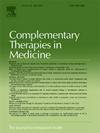The safety and effectiveness of tDCS for epileptic patients: A systematic review and meta-analysis
IF 3.3
3区 医学
Q1 INTEGRATIVE & COMPLEMENTARY MEDICINE
引用次数: 0
Abstract
Background and purpose
Although transcranial direct current stimulation (tDCS) has been used in the treatment of epilepsy for many years, further research is needed on the efficacy and safety of tDCS treatment. This systematic review and meta-analysis aimed to explore the effectiveness of tDCS on seizure frequency (SF), epileptiform discharges, depression, anxiety, and cognitive function in epilepsy.
Materials and methods
We searched the Cochrane Library, PubMed, Embase, Scopus, and Web of Science databases from inception to 9 September 2024. The primary outcomes included SF. The secondary outcomes included epileptiform discharges, depression, anxiety, cognitive function, and adverse events. The meta-analysis was conducted using Review Manager 5.4 software.
Results
12 trials were included, 356 participants (219 in the tDCS group and 137 in the sham group). Among the included studies, three were of high risk, two were of some concern, and seven were of low risk. For the primary outcome metrics, tDCS can reduce the frequency of epileptic seizures (SMD = − 0.63, 95 % CI = [-0.90, − 0.36], P < 0.00001). For secondary outcome measures, there are no statistical differences between the tDCS group and the sham group in epileptiform discharges (SMD = − 0.27, 95 % CI = [-0.71, 0.16], P = 0.22) and adverse events (MD = 1.30, 95 % CI = [0.49, 3.45], P = 0.60). The outcomes of tDCS treatment for depression and anxiety were inconsistent. tDCS did not enhance or impair cognitive function.
Conclusion
tDCS can reduce SF but has no effect on epileptiform discharges in patients with epilepsy. The current evidence is limited to support tDCS treatment for depression, anxiety, and cognitive function in epilepsy patients. Future studies should be standardized and personalized, ensure higher methodological rigor, and probe long-term effects to prove the findings further.
求助全文
约1分钟内获得全文
求助全文
来源期刊

Complementary therapies in medicine
医学-全科医学与补充医学
CiteScore
8.60
自引率
2.80%
发文量
101
审稿时长
112 days
期刊介绍:
Complementary Therapies in Medicine is an international, peer-reviewed journal that has considerable appeal to anyone who seeks objective and critical information on complementary therapies or who wishes to deepen their understanding of these approaches. It will be of particular interest to healthcare practitioners including family practitioners, complementary therapists, nurses, and physiotherapists; to academics including social scientists and CAM researchers; to healthcare managers; and to patients. Complementary Therapies in Medicine aims to publish valid, relevant and rigorous research and serious discussion articles with the main purpose of improving healthcare.
 求助内容:
求助内容: 应助结果提醒方式:
应助结果提醒方式:


